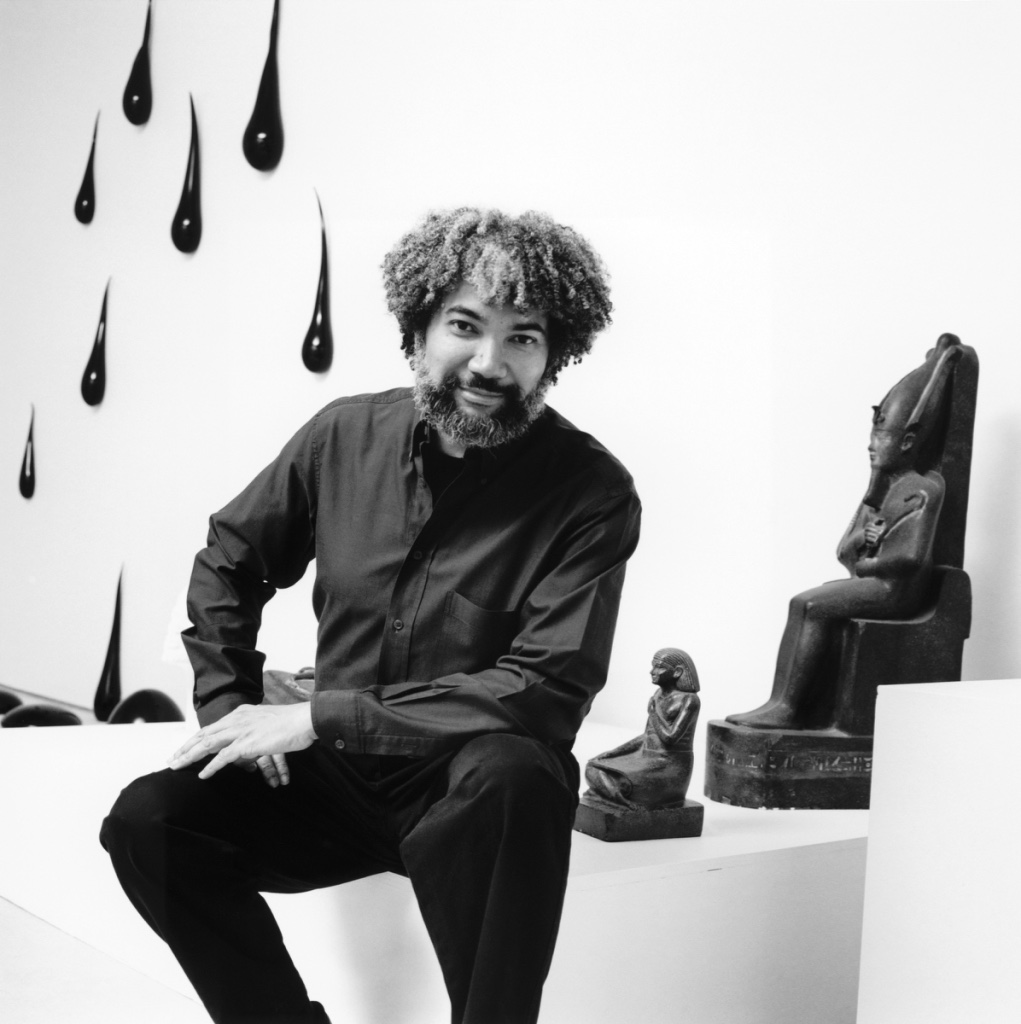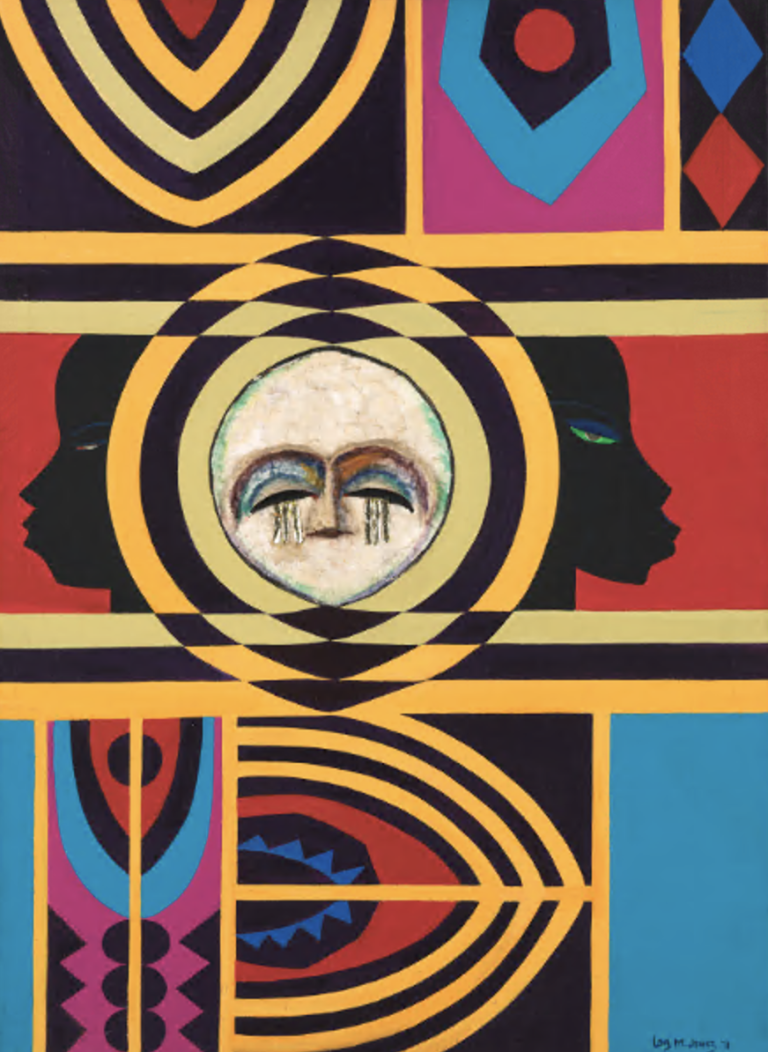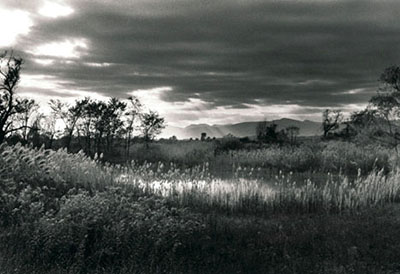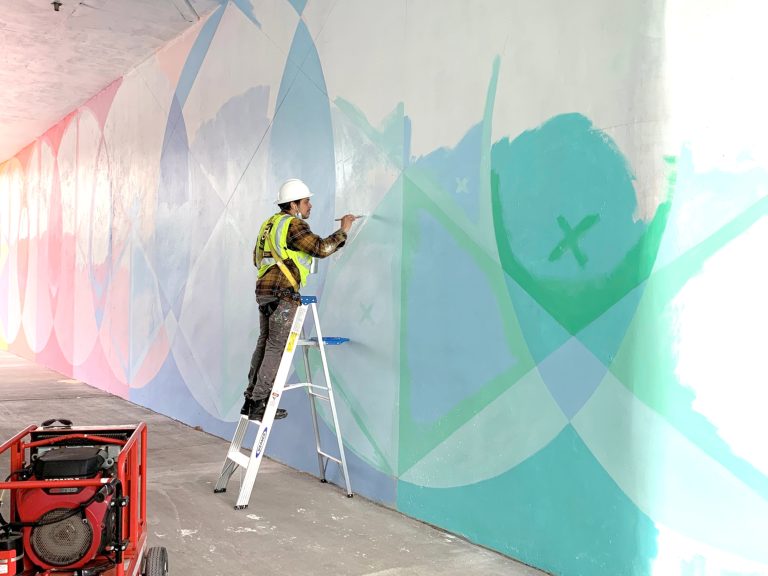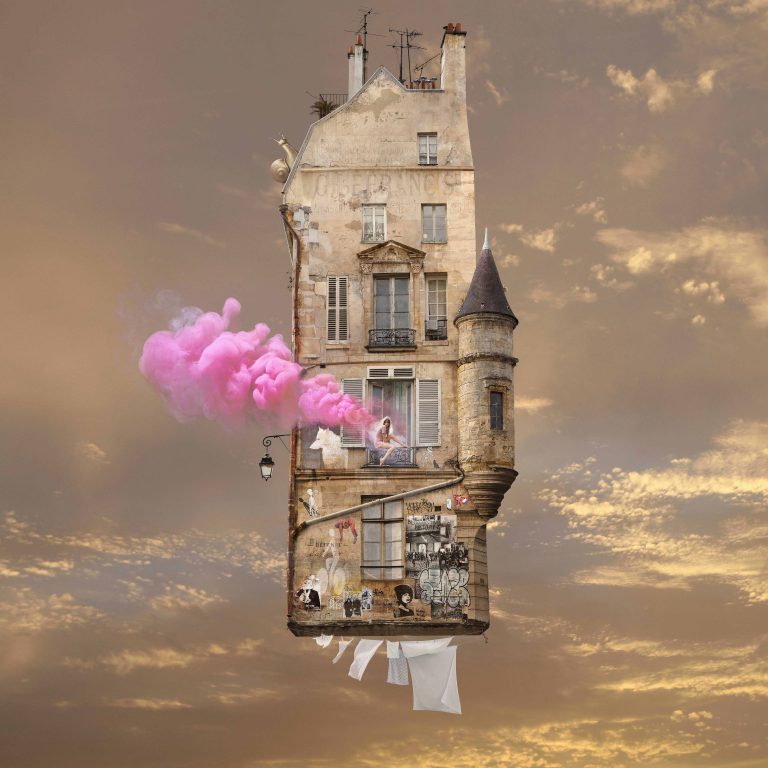Mining the Museum Through the Eyes of Fred Wilson
On Thursday, July 13, staff members at ArtsWestchester had the opportunity to tour the Fred Wilson exhibition at the Neuberger Museum of Art, Purchase College, which is on view through July 30. Illustrious Purchase alumna Fred Wilson is famous for “mining the museum,” a practice in which he assembles a museum’s collection in a critical light. Curator Jacqueline Shilkoff began the tour in the museum’s permanent African Art gallery. Here, she turned to the staff and asked what words they would use to describe the space.
“Dark and sterile” were the first things that came to mind. In the cool, air-conditioned room, the African objects were dimly lit. They were so far removed from their original context that it was difficult to identify the rich, vibrant cultures from where they had originated. Shilkoff pointed to a poster on the wall. The poster was from a psychology magazine and had hung on Fred Wilson’s bedroom wall when he was a child. It displayed an empty white room with only white objects, and an African-American boy whose skin was a stark contrast to his surroundings.

In the African Art gallery, ArtsWestchester staff confronted questions of colonialism and cultural appropriation, but also of the narrative that comes about when segregating African Art to its own wing. As Shilkoff led the tour out of the room, she told the staff that they should return to the wing after the tour. She hinted at the “surprises” that Wilson had left among the display cases. Glancing around the room, it was hard to tell that anything was not where it should be.
Upstairs, Wilson had had fun in the museum’s archives. He had dragged out of storage collections that were on display when he was a student at the college. He paid homage to a space he remembered as a dance studio by placing leotards on Michael Sandle’s sculpture Momumentum pro Gesualdo. On the same floor, Wilson had thrown veils over some of Neuberger’s permanent collection of artwork, playing again with the idea of exclusion. Wilson feels what a museum chooses not to put on display to be more revealing than what they choose to show.
Downstairs from Wilson’s intervention of the museum’s collections, Wilson displayed his own personal collection of objects. As explained by Shilkoff, Wilson wanted the viewer to explore the various lives that objects have by the context in which they are placed. By the time ArtsWestchester’s staff had made it to Fred Wilson’s studio work, they were already in awe.
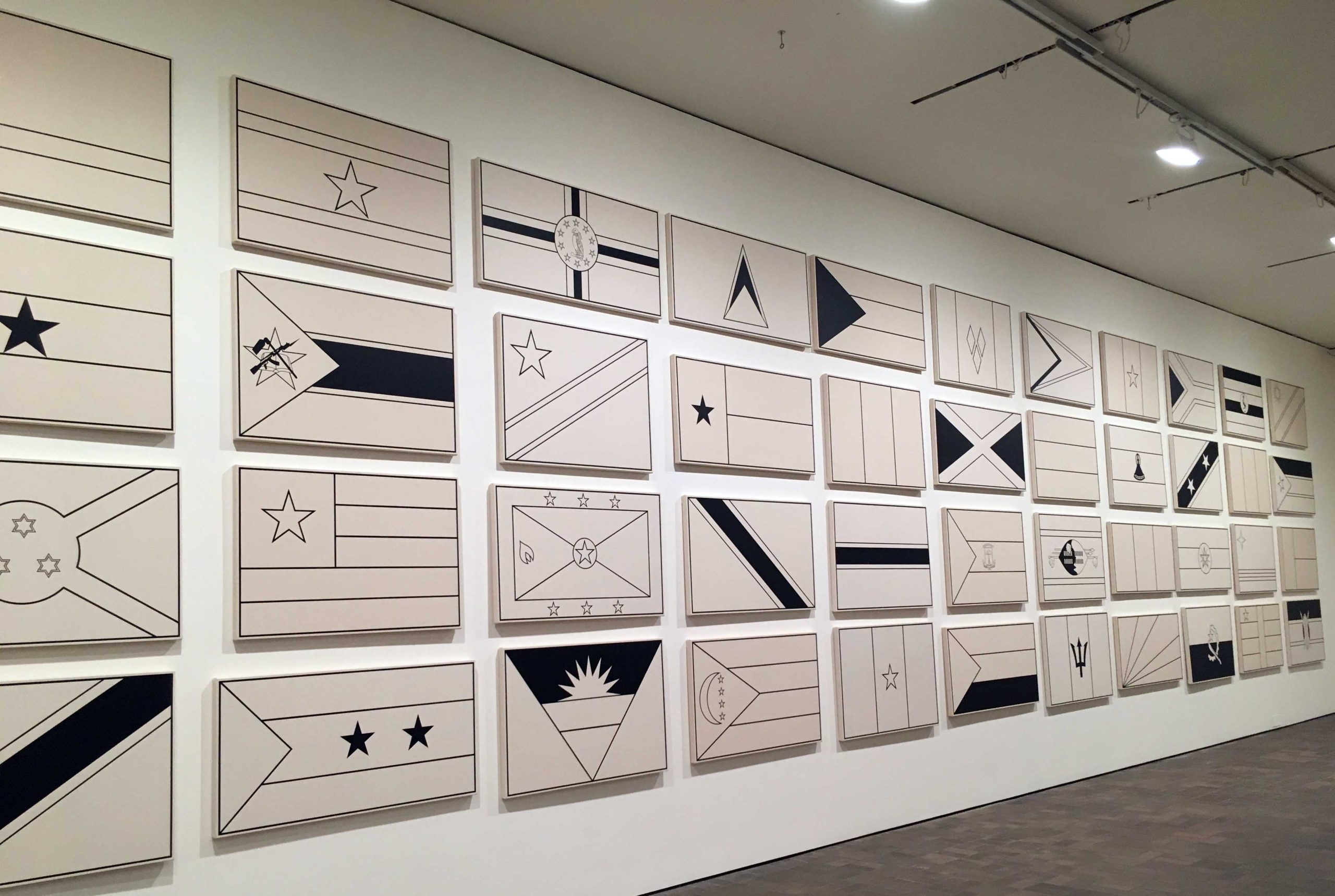
Amongst the play of black and white, the luxury of black Murano glass chandeliers and the color-drained flags of once-colonized countries, Shilkoff stood back to let the staff form their own opinions and questions before explaining Wilson’s intentions. When it was time to leave, some of the staff retraced their steps to the African Art gallery to see if they could spy Wilson’s interventions in the space. They found them, a small appreciative wink from Wilson. The exhibition encourages guests to visit, take a look around and see if they, too, can get in on the secret.
Megan Thomson Connor is the Executive Assistant to the CEO at ArtsWestchester. She is a graduate of Bryn Mawr College where she majored in English and minored in Creative Writing and Theater.
First image: Fred Wilson (photo credit: Kerry Ryan McFate)

About ArtsWestchester
For more than 50 years, ArtsWestchester has been the community’s connection to the arts. Founded in 1965, it is the largest private not-for-profit arts council in New York State. Its mission is to create an equitable, inclusive, vibrant and sustainable Westchester County in which the arts are integral to and integrated into every facet of life. ArtsWestchester provides programs and services that enrich the lives of everyone in Westchester County. ArtsWestchester helps fund concerts, exhibitions and plays through grants; brings artists into schools and community centers; advocates for the arts; and builds audiences through diverse marketing initiatives. In 1998, ArtsWestchester purchased the nine-story neo-classical bank building at 31 Mamaroneck Avenue which has since been transformed into a multi-use resource for artists, cultural organizations and the community. A two-story gallery is located on the first floor of ArtsWestchester’s historic building on Mamaroneck Avenue. artsw.org

